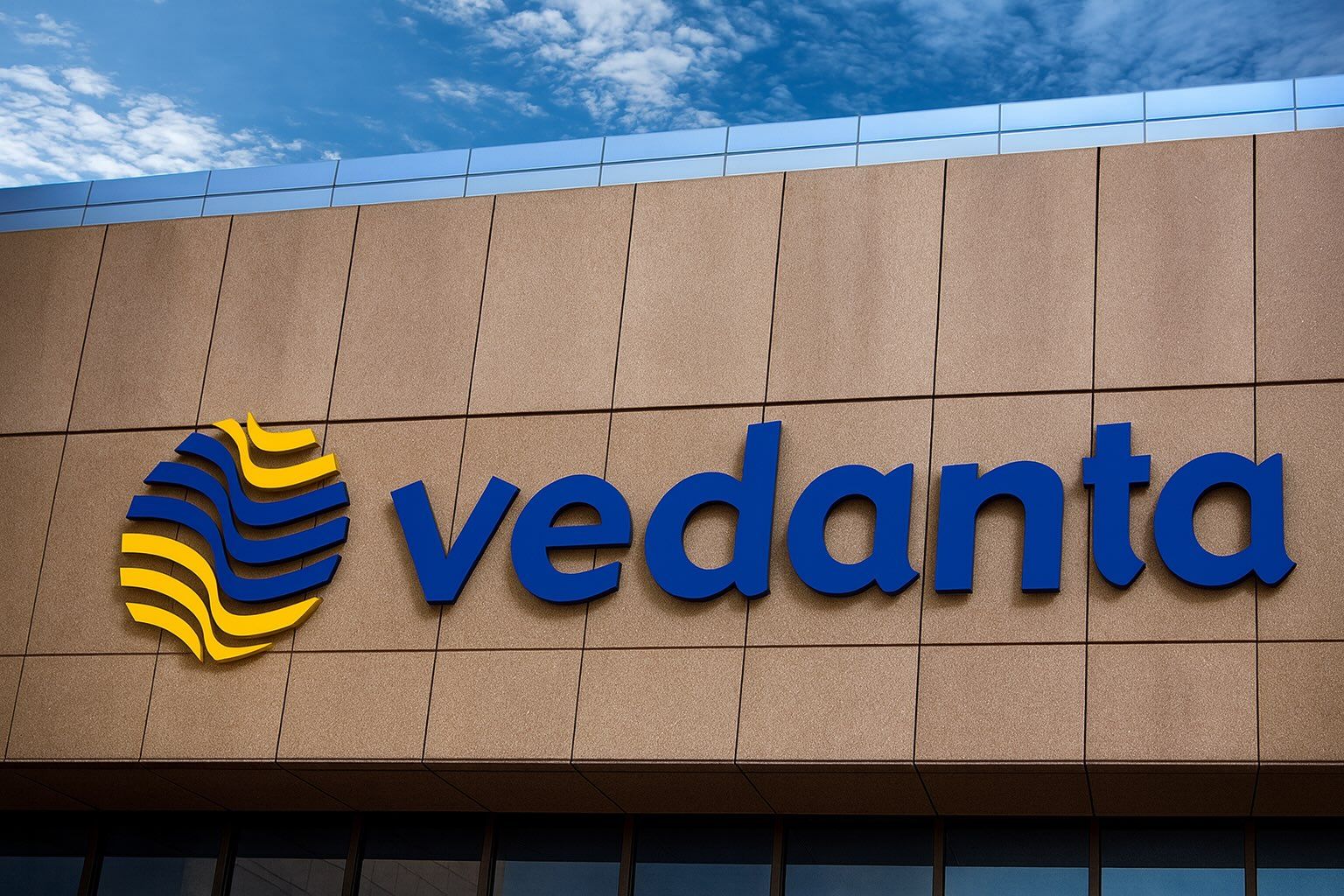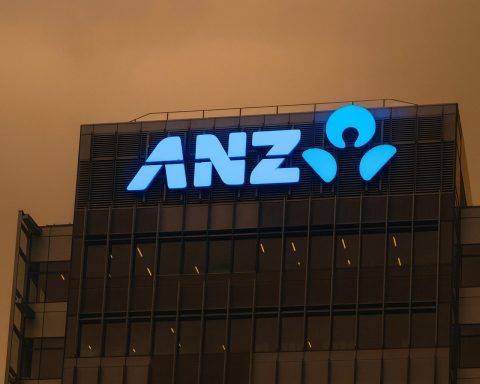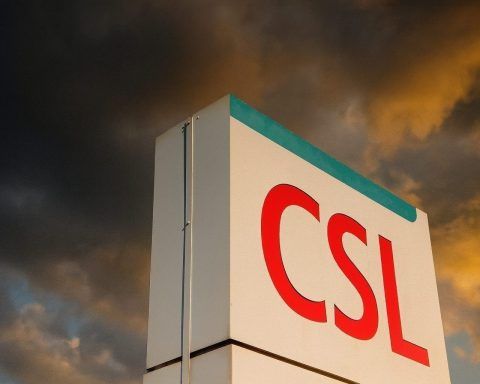- Regulator’s Initial Nod: India’s market watchdog SEBI has approved key documents for Vedanta Ltd’s much-awaited demerger plan, a significant step forward in the restructuring process [1]. However, final clearance still hinges on a tribunal’s approval amid new hurdles.
- NCLT Hearing Delayed Again: The National Company Law Tribunal (NCLT) postponed Vedanta’s demerger hearing yet again, after the bench was unexpectedly reconstituted right before a crucial meeting. The case will now be re-heard on November 12, restarting proceedings on the company’s plea and government objections [2].
- Government Pushback: Serious objections from India’s government have stalled the breakup. Officials allege Vedanta altered the demerger scheme after SEBI’s earlier no-objection, raising concerns of “inflated revenues” and “concealed liabilities” in the filings [3]. The government fears the split could hinder its ability to recover large dues owed by Vedanta’s oil-and-gas business [4].
- Demerger Plan & Delay: Vedanta’s plan would split the mining-to-oil conglomerate into four standalone companies focused on aluminium, power, steel/iron, and oil & gas (with base metals staying with the parent). The shake-up aims to unlock shareholder value but has been pushed to March 2026 (from the original Sep 2025 deadline) as approvals drag on [5].
- Share Price Resilient: Despite the legal drama, Vedanta’s stock remains robust, trading around ₹510 – near its 52-week high [6]. Shares even rose 1.4% on the latest hearing delay news [7]. Analysts say investors are betting on eventual value-unlocking; experts project up to 45% upside for shareholders if the demerger goes through successfully [8].
SEBI Greenlights Documents, But Final Approval Awaits
Vedanta’s journey to split its diverse empire reached a tentative milestone when the Securities and Exchange Board of India (SEBI) approved the documentation for the demerger plan [9]. This essentially meant the market regulator did not object to the revised scheme on record, after earlier compliance checks. SEBI’s nod was crucial – the National Stock Exchange had already issued a no-objection certificate, and Vedanta’s shareholders and creditors had overwhelmingly approved the restructuring (with 99.99% of shareholders in favor, according to filings) in prior votes [10] [11].
However, SEBI’s clearance alone isn’t the finish line. The demerger needs the NCLT’s sanction to legally take effect, and that process has been fraught with delays. In fact, SEBI had initially been reviewing additional details (especially regarding a now-dropped base metals spinoff) which caused an earlier hearing to be pushed from August to September [12] [13]. The regulatory green light now in hand is a positive step, but as recent events show, other roadblocks remain.
Notably, SEBI’s role came under the spotlight in August when the government claimed Vedanta tweaked its scheme after SEBI’s no-objection. SEBI even issued a warning letter to Vedanta over certain non-compliances then [14]. The company denied any wrongdoing and insisted it’s following due process. With the documentation formally accepted by SEBI now, Vedanta hoped for a smooth final leg – but the legal proceedings took another twist.
Tribunal Hurdles: Bench Shuffle Triggers Fresh Delay
The NCLT Mumbai bench hearing Vedanta’s demerger petition has turned into a revolving door of adjournments. Most recently, a hearing slated for October 29 did not go as planned. On the eve of the meeting, the two-judge bench was reconstituted, effectively resetting the clock on the case. As a result, the tribunal scheduled a fresh hearing on November 12, meaning Vedanta’s plea and the government’s objections will be heard afresh by the new bench [15].
This isn’t the first deferral. The NCLT had postponed the case multiple times over the past few months amid various issues. On September 17, it pushed the matter to October 8 and directed both Vedanta and the government (specifically the Petroleum Ministry) to file written submissions [16] [17]. Earlier on August 20, the tribunal delayed proceedings to September, noting that SEBI’s review was incomplete and that the ministry sought time to detail its concerns [18]. Each delay has added uncertainty to the timeline.
The government’s intervention has been a major factor in these hurdles. Through the Ministry of Petroleum and Natural Gas (MoPNG), authorities raised a host of red flags about the demerger. In tribunal filings, the government alleged Vedanta provided insufficient disclosures – particularly regarding the Rajasthan oil block (India’s largest onshore oilfield). It accused Vedanta of showing certain exploration assets on its books that might not fully belong, and questioned a loan raised against those assets [19]. Essentially, officials worry that once Vedanta’s oil and gas arm is spun off, the state might lose leverage to claim outstanding dues or settle ongoing disputes.
One striking contention was over a $578 million payment linked to Vedanta’s oil operations. CNBC-TV18 reported – and Reuters later confirmed – that Vedanta’s Cairn Oil & Gas unit withheld that amount from the government after winning a favorable arbitration ruling, even though an appeal is pending [20]. The ministry views this as a risky move that could be compounded by a breakup. The government’s counsel also spoke of “concealment of facts,” citing allegedly inflated revenues and hidden liabilities in Vedanta’s scheme documents [21]. Such serious charges clearly made the NCLT cautious about rushing approval.
Vedanta’s legal team, for its part, has been countering that many of these issues are either resolved or outside the scope of the demerger decision. The company informed the tribunal that the National Company Law Appellate Tribunal (NCLAT) – a higher forum – had already cleared one key piece of the plan [22]. In September, NCLAT allowed Vedanta’s power subsidiary (Talwandi Sabo Power Ltd, or TSPL) to separate, after a settlement was reached with a Chinese contractor Sepco which had earlier objected over unpaid dues [23]. That NCLAT clearance removed one procedural roadblock, giving Vedanta a bit of momentum.
Yet, the brewing clash with the government remains unresolved. Vedanta even offered a corporate guarantee to assure it will cover any dues if they lose the oilfield case, hoping to assuage officials [24]. But trust seems to be lacking. “The latest spat complicates [Anil] Agarwal’s goal” of reducing debt via the split, observed Reuters Breakingviews, noting that as long as trust issues dominate with New Delhi, Vedanta’s grand demerger “will stay on ice.” [25] [26]
Inside the Demerger Plan: Four New Companies, Value Unlocked
Under the proposed restructuring, Vedanta Ltd would carve out four distinct entities, each focusing on a core part of the conglomerate’s business. According to the plan (revised in late 2024), the new companies would be [27]:
- Vedanta Aluminium Metal Ltd: housing Vedanta’s vast aluminum operations (e.g. Jharsuguda and BALCO smelters, alumina refinery, bauxite mines, power plants).
- Vedanta Oil & Gas Ltd: comprising the oil and gas division (Cairn Oil & Gas, now under subsidiary Malco Energy) which includes the prolific Rajasthan oil fields.
- Vedanta Iron & Steel Ltd: owning the iron ore mines (in Goa, Karnataka, Liberia) and the Electrosteel (ESL) steel plant, consolidating the ferrous materials portfolio.
- Vedanta Power (Talwandi Sabo Power Ltd): encompassing the group’s power generation assets, including TSPL’s large thermal power plant and other power units.
Meanwhile, Vedanta Limited (the parent) would remain listed and continue to hold the base metals business (primarily the zinc operations through Hindustan Zinc Ltd, plus copper and other minerals) [28] [29]. Notably, this is a change from the original vision of six separate companies – Vedanta had to drop the base metals spinoff after resistance, since the government itself owns ~29.5% of Hindustan Zinc and objected to that part of the split [30].
The strategic rationale for this breakup is multi-fold. Management argues it will simplify the corporate structure, allow each vertical to pursue its own growth and fundraising, and unlock value by letting the market value pure-play companies more richly than a conglomerate. “The demerger…will help unlock greater value and improve operational focus,” Vedanta said when extending the timeline [31]. Each new unit could attract investors specific to its sector (be it global oil majors or metal specialists), potentially commanding higher valuations than lumped together. In fact, brokerage Emkay estimated that the five entities (including the parent) could together be worth ₹2.73 lakh crore in market cap, vs about ₹1.8 lakh crore for Vedanta pre-demerger [32]. That implies investors might be undervaluing the parts by a huge margin under the current structure.
Analysts are optimistic about the upside if the plan materializes. “The proposed demerger…unlocks significant value for investors,” noted an ICICI Direct report, pointing out that at present the market is effectively assigning almost zero valueto Vedanta’s oil, steel and power businesses [33]. By getting separate listings, these businesses could be re-rated. Consequently, experts project roughly a 45% upside for Vedanta shareholders post-demerger, as the individual companies get properly valued [34]. In simple terms, investors holding Vedanta today would, upon completion, receive one additional share in each of the new companies for every share owned [35] – essentially five stocks for the price of one – and the sum of those parts is expected to be much higher than the current single stock [36] [37].
It’s no surprise then that Vedanta’s founder and chairman, billionaire Anil Agarwal, has been championing this split. Agarwal has also candidly linked the demerger to the group’s debt reduction plan. His London-based holding company, Vedanta Resources, is saddled with nearly $6 billion in debt and hefty interest bills [38]. Breaking up the Indian arm into easily “appreciable” units could “smooth the way for the parent to sell shares in them to raise cash,” Reuters observed [39]. Essentially, once these entities list, Vedanta Resources can monetize stakes to pare debt. Agarwal’s endgame is securing an investment-grade credit rating for his empire, and a successful demerger would be a big leap in that direction [40].
For now, the deadline to complete the demerger has been extended to March 31, 2026, as Vedanta awaits the NCLT’s verdict and other government nods [41]. This is the second extension – originally the target was March 2025, then September 2025. “Given that [required approvals] are still in process… the board [has] decided to extend the timeline,” the company said in an October filing [42]. Despite the delays, Vedanta’s leadership remains upbeat. Vedanta Resources CEO Deshnee Naidoo recently said she is “optimistic” the demerger will be completed in the current financial year, emphasizing that her focus is on executing this restructuring smoothly [43]. Agarwal himself told media that he expects the “share price will do very well” once the restructuring is done, and promised a “very good dividend policy” for shareholders through the transition [44]. In other words, management is eager to reassure investors that the value creation story is intact – just delayed, not derailed.
Stock Market Reaction and Outlook
Through the months of courtroom twists and turns, Vedanta’s stock has held up remarkably well. In fact, the shares have often rallied on signs of progress or management assurances, and only briefly dipped on negative headlines. After the government’s objections came to light in August, Vedanta’s stock fell as much as ~3% intraday, but quickly pared losses to end just 1% down around ₹445 [45]. By October, as global commodity prices improved and broader markets rose, Vedanta stock climbed firmly above ₹500.
On October 29 – the day NCLT’s bench reshuffle pushed the hearing out – Vedanta’s stock actually rose. It closed about 1.4% higher at ₹509.5, bucking any assumption that a delay would spook investors [46]. Traders seemed to view the development as a mere timing issue rather than a deal-breaker. Market experts note that Vedanta is trading near its 52-week high of ₹527 (hit in December 2024) [47], suggesting that much of the expected value from the demerger may already be getting priced in. The stock has also dramatically outperformed over a longer horizon – it was up ~80% in 2024, and more than doubled in the last five years [48], fueled by robust dividends and the demerger narrative.
Looking ahead, analysts are divided on the short-term trajectory but broadly positive on the long-term upside if the breakup succeeds. Technical chartists observe that ₹520-530 is a resistance zone; a decisive breakout could send the stock toward ₹550 or higher, while any disappointment could see a pullback to the ₹420-450 range where it found support earlier [49] [50]. Fundamentally, the sum-of-parts valuation argument is strong – as discussed, some research houses see 30-50% stock price appreciation potential post-demerger [51]. “Shares of Vedanta are likely to remain on investors’ radar amid the demerger developments,” wrote Rex Cano of Business Standard, noting up to 24% upside indicated by certain chart patterns even as of August [52] [53].
That said, risks abound. The government’s hard stance injects uncertainty – any adverse ruling or new condition imposed could dent investor confidence. There’s also the overhang of Vedanta’s debt and cash flow needs; the company has been funding generous dividends (a major attraction for shareholders) and will need to maintain healthy finances during the transition. Global commodity price volatility (for oil, aluminum, etc.) will continue to sway sentiment in the interim, especially since Vedanta will effectively become four sector-specific stocks after the split.
For now, the market seems to be taking cues from every legal update. A clear go-ahead by NCLT – whenever it comes – would likely be a strong catalyst for the stock, while any indication of the plan being blocked could trigger a sharp selloff. As one Yahoo Finance commentary put it, “Vedanta’s demerger hopes now ride on easing regulators’ concerns,” and investors are cautiously betting that cooler heads will prevail [54] [55]. The next key date is Nov 12, when the reconstituted NCLT bench will hear the matter anew. All eyes will be on whether the tribunal finally grants approval or if further arguments (and potentially more delays) ensue.
The Bottom Line
Vedanta’s ambitious demerger – aimed at creating four independent, listed powerhouses out of the current conglomerate – is at a critical juncture. SEBI’s sign-off on the paperwork and earlier court victories gave the company momentum, but government objections have introduced significant uncertainty, manifesting in repeated tribunal delays. The tug-of-war reflects broader tensions: on one hand, a corporate desire to unlock value and tackle debt; on the other, regulators ensuring no corners are cut and public interests (like state dues) are protected.
For the public shareholder, it’s a high-stakes wait-and-watch game. If Vedanta navigates the legal maze and executes the split, the reward could be substantial – a stake in four focused companies and possibly a higher combined market value. The company’s leadership remains confident, with timelines merely pushed out, not cancelled. “We’re optimistic to complete it this year,” Vedanta’s CEO has said [56], underlining that the plan is very much alive.
In the meantime, Vedanta’s stock continues to trade strongly, reflecting hope that the Demerger Drama will have a favorable climax. Investors should brace for continued volatility around court dates and news flashes. The story of Vedanta’s big split is far from over – but as of now, despite the roadblocks, the break-up plan is still on track, just delayed. Come November 12, and the subsequent months, a clearer picture will emerge on whether Anil Agarwal’s bold restructuring dream will finally become reality, or face further twists in this corporate saga.
Sources: Vedanta regulatory filings and media reports [57] [58] [59] [60]; Reuters, NDTV Profit, Business Standard and Moneycontrol news analyses [61] [62] [63] [64]; Expert commentary from ICICI Direct and Reuters Breakingviews [65] [66]; Company statements via press and exchange releases [67] [68].
References
1. www.reuters.com, 2. www.moneycontrol.com, 3. www.reuters.com, 4. www.reuters.com, 5. www.ndtvprofit.com, 6. www.moneycontrol.com, 7. www.moneycontrol.com, 8. www.icicidirect.com, 9. www.reuters.com, 10. www.icicidirect.com, 11. www.icicidirect.com, 12. www.business-standard.com, 13. www.business-standard.com, 14. www.reuters.com, 15. www.moneycontrol.com, 16. www.business-standard.com, 17. www.business-standard.com, 18. www.business-standard.com, 19. www.ndtvprofit.com, 20. www.reuters.com, 21. www.reuters.com, 22. www.ndtvprofit.com, 23. www.ndtvprofit.com, 24. www.reuters.com, 25. www.reuters.com, 26. www.reuters.com, 27. economictimes.indiatimes.com, 28. www.business-standard.com, 29. www.ndtvprofit.com, 30. www.reuters.com, 31. economictimes.indiatimes.com, 32. www.icicidirect.com, 33. www.icicidirect.com, 34. www.icicidirect.com, 35. www.icicidirect.com, 36. www.icicidirect.com, 37. www.icicidirect.com, 38. www.reuters.com, 39. www.reuters.com, 40. www.reuters.com, 41. www.ndtvprofit.com, 42. www.ndtvprofit.com, 43. www.ndtvprofit.com, 44. www.icicidirect.com, 45. www.business-standard.com, 46. www.moneycontrol.com, 47. www.moneycontrol.com, 48. www.icicidirect.com, 49. www.business-standard.com, 50. www.business-standard.com, 51. www.icicidirect.com, 52. www.business-standard.com, 53. www.business-standard.com, 54. finance.yahoo.com, 55. www.mining-technology.com, 56. www.ndtvprofit.com, 57. www.ndtvprofit.com, 58. www.reuters.com, 59. www.moneycontrol.com, 60. www.icicidirect.com, 61. www.reuters.com, 62. www.business-standard.com, 63. www.moneycontrol.com, 64. www.reuters.com, 65. www.icicidirect.com, 66. www.reuters.com, 67. www.ndtvprofit.com, 68. www.icicidirect.com







